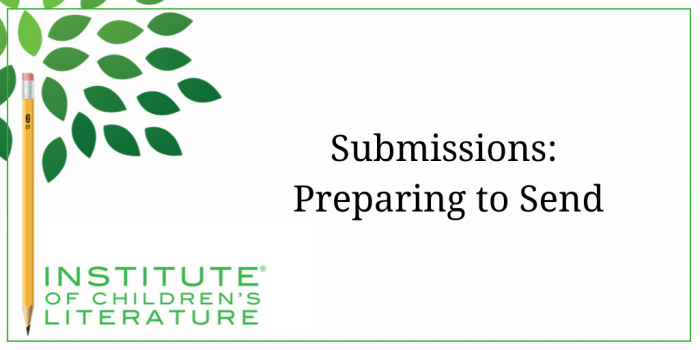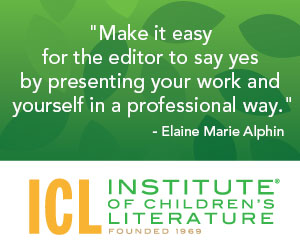1000 N. West Street #1200, Wilmington, DE 19801
© 2024 Direct Learning Systems, Inc. All rights reserved.

We teach our students how to write and get published!
View our Course Catalog >
I don’t always have something to submit to a publisher. Writing takes time. Revising takes time. Research takes times. So I’m not submitting constantly. When I wrote primarily for magazines I came much closer to submitting constantly, but now a bigger portion of my time goes to writing and revision. But when it comes to submissions, I am always doing something. Does that sound like I just contradicted what I just said? Not really.
I’ve said it before, and you may be growing tired of it, but successful submissions require research. I’m always researching. I’m updating my market guides. I’m making submission plans for stories I’m working on. I’m reading constantly about the business so I can hear of new markets or new agents or new editors right away. All of that takes time, but it’s part of the submissions process for me. The main reason I put that much time into my pre-submission activities is that it decreases the number of avoidable rejections.

Since rejections are both disheartening and time consuming, I work hard to avoid making mistakes that are certain to return rejections. And that means I am always researching publishers.
Once I have a story that I want to submit, I need to be certain I’m sending it in the format and fashion the publisher wants. Publishers are paying, so they get to have submissions any way they want. Basic manuscript format hasn’t really changed since I graduated from college in the very, very early eighties. Manuscripts are normally double spaced. A serif font (I use Times New Roman) in 12 pt is used for the text. The manuscript is double spaced. The first page has a header giving all my contact information and the manuscript’s word count. All pages after the first page have a header with a slug. A slug is a single line that contains a snippet of the title, my last name, and the page number. It looks like this:
Now, that’s the format I use in the vast number of submissions, but not all publishers want standard manuscript format. Some want the manuscript pasted into an email. When you do that, you don’t double space (because that’s a horror show if the publisher tries to print it out). Instead you single space the manuscript and use an extra space between paragraphs. You don’t indent paragraphs (unless the publisher’s guidelines specifically ask you to.) You put your contact information at the bottom of the “cover letter” part of the email and then I usually put it all again at the beginning of each separate part of the email. So if the publisher asks for cover letter, synopsis, and manuscript all pasted into the email. My contact info will be at the end of the cover letter, at beginning or end of synopsis, and at the beginning of the manuscript. I never make it difficult to find out how to contact me, because any time I make something difficult for a publisher I lessen my chance of a sale.
Some publishers just want an odd format for their own reasons that they don’t explain. I recently saw a publisher who wanted a manuscript sent as an email attachment (so one where you would normally use standard manuscript format) but still wanted the manuscript single-spaced. That’s unusual, but I would make sure to give the publisher what they ask for. The number one way to know what format to use is to check the publisher’s writer’s guidelines. If the guidelines don’t include any information on format, then I use standard format for all manuscripts either mailed or sent as attachments (depending on which way they’ve specifically requested, when in doubt, I do not send attachments), and the format I just described above for all manuscripts pasted into email. These days many publishers are using electronic upload programs to take manuscripts. For those, if the submissions guidelines don’t say otherwise, I use standard manuscript format. But always I’ll be certain the manuscript is in the format the publisher wants. Some are okay with Word docs, while others want a PDF file or even a text file. Give them what they ask for.
You’ll notice above that I mentioned cover letters. These are part of most submissions of manuscripts (surprisingly, some publishers who use uploaders don’t seem to want cover letters. I assume they’ll seek out more information from the author if they are interested. At any rate, when in doubt, I include a cover letter.) A cover letter does three things: (1) it tickles interest with a very enticing, super short synopsis of my work, and (2) it makes a connection between my submission and that very specific publisher or agent and (3) it tells something brief about myself. All of this is done in a couple paragraphs. So we’re talking about a synopsis of a few sentences at most, plus a single sentence (or maybe two short ones) connecting my submission to that specific publisher or agent, and a sentence or two of bio.
With that in mind, you shouldn’t wander around or sound like you’re stammering your way through the cover letter. Be direct. Be brief. Be casual, but professional. So my super short synopsis will hint at character and conflict. Here are some possible super short synopses:
When Jack’s dog disappears, he takes on skeptical parents, crabby dogcatchers and a suspicious lurker to prove that a dog’s best friend is his boy.
When Jojo’s best friend Mika moves away, Jojo must face her third grade year alone. How can she make a new friend when she doesn’t even know who she is without Mika’s loud, funny presence?
When Emily’s clockmaker father passes from influenza, she needs an adult to protect her. Luckily, Emily has just the thing, in her workshop. Everything should be fine as long as no one looks too close at Grandfather and his clocks.
Notice these all have an inciting incident to show the reader that the stories are about change, which means they’ll be interesting and will demand action of the main character (both helpful things for a plot). They also don’t tell the editor everything. Sometimes you’ll be asked to send a complete synopsis that tells everything, including the resolution. But that’s usually a separate document. My synopsis blurb in the cover letter is intended to capture interest and tug the editor in enough to get them to read the synopsis and/or the manuscript.
The second short bit in my cover letter will connect my submission with the publisher. This bit is very specific and helps the publisher know that I paid attention to whom I’m submitting. It shows I’m not simply sending scattershot submissions to everyone with no attempt to make the submission match the person/publisher I’m submitting to. So what kinds of connections might I make for the stories I mentioned above? They might look something like this:
“Dog’s Best Friend” is a chapter book in the tradition of Louis Sacher’s Marvin Redpost. Since Super Publishing specializes in chapter books, and your guidelines specifically mention books with adventure elements, I believe “Dog’s Best Friend” would be a strong addition to your line.
“Jojo Finds Her Way” is the kind of warm funny story that I’ve often read in Spider, and Jojo is the kind of complex and believable character you mention in your guidelines.
“Grandfather Clock” is a historical fantasy in the spirit of The Invention of Hugo Cabret. The quirky main character isn’t about to let convention define her life, making her the kind of strong female character that Super Publishing is known for.
So you can see that the connection part of the cover letter is complimentary as well as being demonstrative of tiny specifics that link the story I’m offering with the needs of the publisher
The last bit of the cover letter is a very small bit about me. If the piece sells, I’ll be asked to send a “real” bio that is quite a bit longer. Now, as I have been published, my author blurb bit tends to be a count of the books I’ve had published. If I’m sending a short story, I’ll mention a few of the magazines I’ve been published in. But before I was published, I would use this part to make a specific link between my expertise and my story. So an unpublished writer, the blurb at the end might say something like this:
“Dog’s Best Friend” is based on a true story of when I was ten years old and my dog disappeared. Like Jack, I refused to believe my dog simply ran away, and like Jack, I didn’t give up on my best friend, no matter what.
After a decade of teaching middle school, I’ve seen many children struggle to find a new friend after an old friendship is gone. Jojo’s story is inspired by all the brave kids who realized that the best way to make a friend is to be one.
I’ve always been fascinated with wind-up toys, especially the complex automata of inventor Jacques de Vaucanson. It’s in the spirit of Vaucanson that “Grandfather Clock” was born.
So that takes us through cover letters (which are normally single-spaced, by the way. Save the double spacing for the manuscript) and manuscript formats. One thing to remember about all of this is that good writing can overcome a lot of mistakes. When I first began submitting, back in the early 80s, I did a lot of things wrong in terms of format. But I sold pieces to publishers because the writing was engaging, and because I generally chose publishers who published the sort of thing I was selling. So write well, research well, and many of the tiny mistakes that we all make will be far less important. Do you best, always, (after all, you don’t want to give them an easy reason to reject you) but when you know you’ve made a mistake, don’t despair. I make them all the time.
With over 100 books in publication, Jan Fields writes both chapter books for children and mystery novels for adults. She’s also known for a variety of experiences teaching writing, from one session SCBWI events to lengthier Highlights Foundation workshops to these blog posts for the Institute of Children’s Literature. As a former ICL instructor, Jan enjoys equipping writers for success in whatever way she can.
1000 N. West Street #1200, Wilmington, DE 19801
© 2024 Direct Learning Systems, Inc. All rights reserved.
1000 N. West Street #1200, Wilmington, DE 19801
© 2024 Direct Learning Systems, Inc. All rights reserved.
1000 N. West Street #1200, Wilmington, DE 19801
© 2024 Direct Learning Systems, Inc. All rights reserved.
1000 N. West Street #1200, Wilmington, DE 19801
© 2024 Direct Learning Systems, Inc. All rights reserved.

1000 N. West Street #1200, Wilmington, DE 19801
© 2025 Direct Learning Systems, Inc. All rights reserved.

1000 N. West Street #1200, Wilmington, DE 19801
©2025 Direct Learning Systems, Inc. All rights reserved. Privacy Policy.
3 Comments